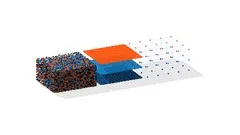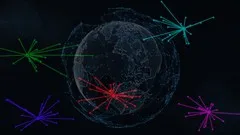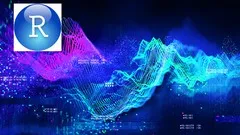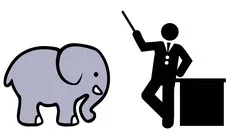
Introduction to Clustering using R 
Discover the power of clustering with the Introduction to Clustering using R course. This essential machine learning algorithm is a must-know for anyone aspiring to excel in data science. Gain the skills needed to process and cluster any type of data, opening up endless career opportunities. Not only that, but this course also introduces you to R, the go-to programming language for data processing in top global companies. Don't miss out on this chance to enhance your data science skills and stay ahead in the industry. Enroll now and unlock your potential! Get a comprehesive understanding of Introduction to Clustering using R which is a pay course. AZ Class provides this course data for free. Learn more certificate and details here. ▼
ADVERTISEMENT
Course Feature
![]() Cost:
Cost:
Paid
![]() Provider:
Provider:
Udemy
![]() Certificate:
Certificate:
Paid Certification
![]() Language:
Language:
English
![]() Start Date:
Start Date:
2019-06-08
Course Overview
❗The content presented here is sourced directly from Udemy platform. For comprehensive course details, including enrollment information, simply click on the 'Go to class' link on our website.
Updated in [October 16th, 2023]
What does this course tell?
(Please note that the following overview content is from the original platform)
This course would get you started with clustering, which is one of the most well known machine learning algorithm, Anyone looking to pursue a career in data science can use the clustering concepts and techniques taught in this course to gain the necessary skill for processing and clustering any form of data. In addition, the course would familiarize you with R, which is becoming the default programming language for processing data among the global companies.
We considered the value of this course from many aspects, and finally summarized it for you from two aspects: skills and knowledge, and the people who benefit from it:
(Please note that our content is optimized through artificial intelligence tools and carefully reviewed by our editorial staff.)
What skills and knowledge will you acquire during this course?
During this course, the learner will acquire the following skills and knowledge:
1. Understanding of clustering: The learner will gain a comprehensive understanding of clustering, which is a popular machine learning algorithm used for grouping similar data points together.
2. Application of clustering techniques: The course will teach the learner various clustering techniques, such as k-means clustering, hierarchical clustering, and density-based clustering. The learner will learn how to apply these techniques to different types of data.
3. Data preprocessing: The course will cover the necessary data preprocessing techniques required before applying clustering algorithms. The learner will learn how to handle missing values, normalize data, and handle categorical variables.
4. Evaluation of clustering results: The learner will acquire knowledge on how to evaluate the quality of clustering results. They will learn about metrics such as silhouette score and elbow method to assess the effectiveness of clustering algorithms.
5. Implementation of clustering using R: The course will familiarize the learner with R, a widely used programming language for data processing. The learner will gain hands-on experience in implementing clustering algorithms using R.
6. Practical applications: The course will provide real-world examples and case studies where clustering is applied to solve various data-related problems. The learner will understand how clustering can be used in different domains, such as customer segmentation, image recognition, and anomaly detection.
Who will benefit from this course?
This course will benefit individuals interested in pursuing a career in data science. It is particularly useful for those who want to gain skills in processing and clustering any form of data. Professionals in fields such as data analysis, data mining, and machine learning will find this course valuable. Additionally, individuals working in global companies that use R as their default programming language for data processing will benefit from this course.
Course Syllabus
Course Preview, Understanding the Basics of Clustering
Popular distance Measure - Euclidean & Hamming/ Kmeans Clustering in R
Understand Partitioning Around Medoids, Hierarchical form of Clustering
Understand clustering process of binary data, Kmodes clustering
Density-based clustering, cluster ordinal data, find replacement for empty cell
Determine ideal number of clusters, daisy function to cluster mixed data
Goodbye
Course Provider

Provider Udemy's Stats at AZClass
Discussion and Reviews
0.0 (Based on 0 reviews)
Explore Similar Online Courses

Unsupervised Machine Learning: Cluster Analysis Algorithms

Cluster Analysis & Unsupervised Machine Learning in R

Python for Informatics: Exploring Information

Social Network Analysis

Introduction to Systematic Review and Meta-Analysis

The Analytics Edge

DCO042 - Python For Informatics

Causal Diagrams: Draw Your Assumptions Before Your Conclusions

Whole genome sequencing of bacterial genomes - tools and applications

Hadoop Cluster Administration Course: Guide for Hadoop Admin

Cluster Analysis and Unsupervised Machine Learning in Python


Start your review of Introduction to Clustering using R